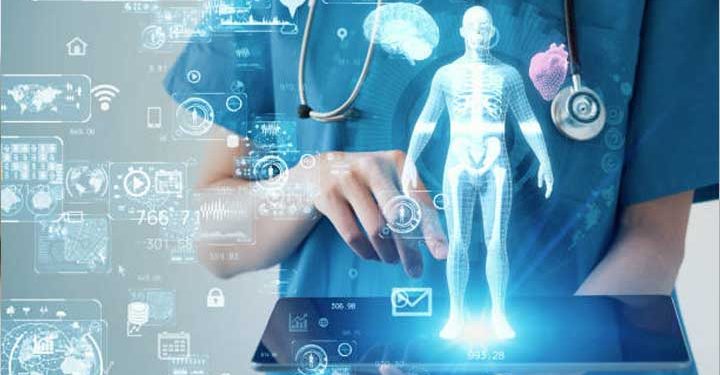The COVID-19 pandemic has spoken enough about the fate of traditional healthcare methods and approaches, besides paving the way for technological advancements changing the face of healthcare across the globe. Digital healthcare technologies such as Artificial Intelligence, Virtual Reality, 3D Printing, Robotics, and Nanotechnology are transforming medical care from head to toe.
Medical device marketing initiatives are continually highlighting the latest developments, innovations, and breakthroughs in the field, with more and more businesses coming forward to talk about how their interventions are changing lives. Apart from spreading awareness on the matter, such initiatives are also encouraging other curious minds to explore and experiment.
However, the market is still looming with fake news and half-truths defacing the essence and relevance of technological advancements in healthcare. In this article, we will be looking at various ways in which technology is changing healthcare for the better.
Technology for Staff and Patient Management
Hospitals need to be very careful about their staff and patients on an everyday basis, considering their lives are at risk. In case of an adverse event, like a natural disaster, an accident or even unprecedented numbers of patients in the case of an epidemic or pandemic, the burden of managing patients and staff increases manifold.
Technology can play a critical role in these situations. Staff members can be provided with clinical mobile computers for real-time communication and immediate data sharing with colleagues dispersed within and beyond the hospital premises, thus improving their efficiency and outcomes. Patients can be provided with barcoded wristbands for identification during medication and treatment phases, besides immediately locating them within the premises. Remote monitoring devices can be used to keep track of routine checks and urgent patient care.
Artificial Intelligence bringing the Future to Healthcare
This powerful technological tool is helping handle medical records more efficiently, besides designing treatment plans effectively, developing medical drugs faster, and even diagnosing cancerous and non-cancerous tissue samples. AI is being drastically used in the diagnosis and analysis of various forms of cancers and other fatal diseases that are difficult to self-identify until later stages.
Virtual Reality transforming Patient and Doctor Lives
Changing the lives of patients and physicians alike, virtual reality is helping bed-ridden patients travel virtually to any place they like or communicate with those that they want to, with a very real-worldly essence to it. The use of VR has proliferated beyond this virtual imagination to penetrate into fields of surgeon training, pain and anxiety management, and improving overall healthcare experience through desirable simulations.
Augmented Reality disseminating Pathbreaking Information
AR differs from VR in that the user does not lose complete touch with reality, with information being put into eyesight as fast as possible. AR is, in fact, becoming the driving force behind pushing healthcare toward the future, and this holds true for both patients and medical providers.
From helping medical students and professionals train in real-life-like operations to augment their capabilities by providing detailed views and perspectives, AR is providing pools of highly detailed digital representations of human anatomy for in-depth understanding for all.
Unprecedented Pace and Accuracy of Diagnosis
With the help of highly advanced devices like medical tricorders, doctors and healthcare professionals now have access to a single supreme device that allows them to diagnose and analyze a range of diseases. Now a single device is helping measure heart rate, temperature, blood pressure, ECG, oxygen saturation, and so on. The installation of cameras on these devices is also enabling detailed diagnoses for telemedical purposes.
Equipment and Inventory Management Made Easy
Healthcare facilities have several pieces of equipment, including beds, wheelchairs, IV poles, infusion pumps, ventilators, and heart monitors to handle, which are always in demand across the length and breadth of the hospital. Geotagging of this equipment using sensors can help manage them much more smoothly, by identifying the immediate location of these assets.
Inventory management has also been an area of concern for hospitals for the longest time. The use of technologies for placing the right labels and barcodes on packages, whether a mask, blood vial, medical device, or medicine, will automatically bring in overall accuracy, punctuality, and hassle-free reporting, making inventory management much easier.
Supply Chain Management Simplified
Hospitals are one of the biggest users of supply chain and logistics, with so many items and equipment being transported to and fro on a daily basis. Procurement and management teams often end up clashing due to a lack of accurate information, and this is where technology plays a significant role.
Implementing barcodes, geotagging and other track-and-trace mechanisms already simplifies the task of locating and managing the supply chain in real-time. Besides, digital communication tools and data-sharing platforms help different professionals in the hierarchy communicate effectively, helping them relay any problems immediately through clear, re-visitable directions. Communication, collaboration, and workflow applications can thus be maximized.
Some Food for Thought
The constant innovations and breakthroughs that our world is surrounded in today make it easy for us to understand that technology is truly transforming healthcare unprecedentedly, and will continue to in the future. The need of the hour, however, is to disseminate these developments and knowledge to the greater pool of shared resources for healthcare facilities and professionals, not to mention government authorities and private sectors, to look into and get inspired from. Unless technology has invaded every sphere and every realm, we cannot hope to proceed into a bright and technology-led future for healthcare.















































